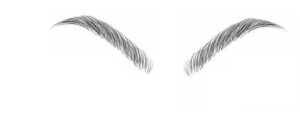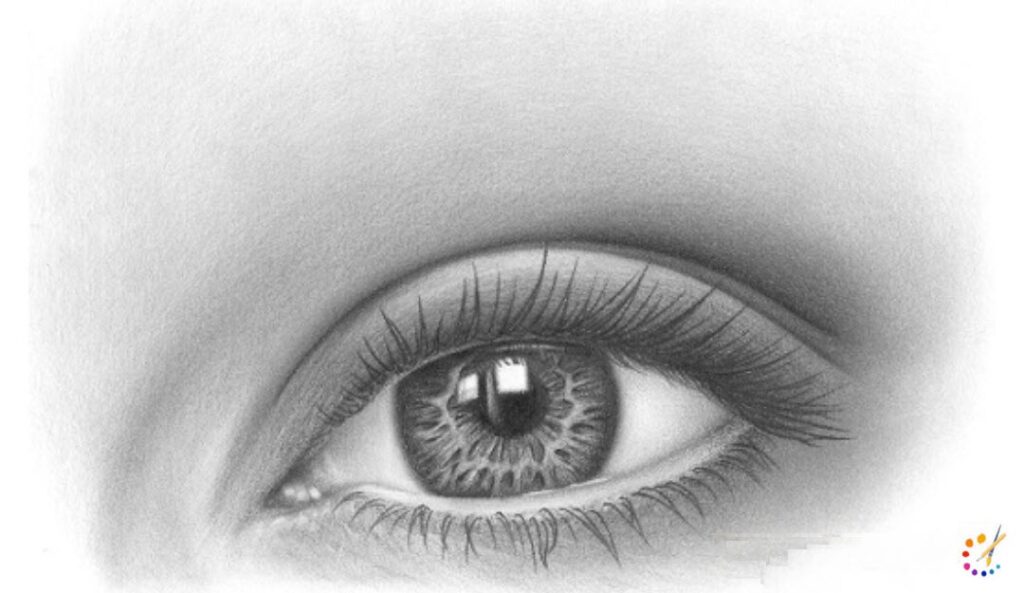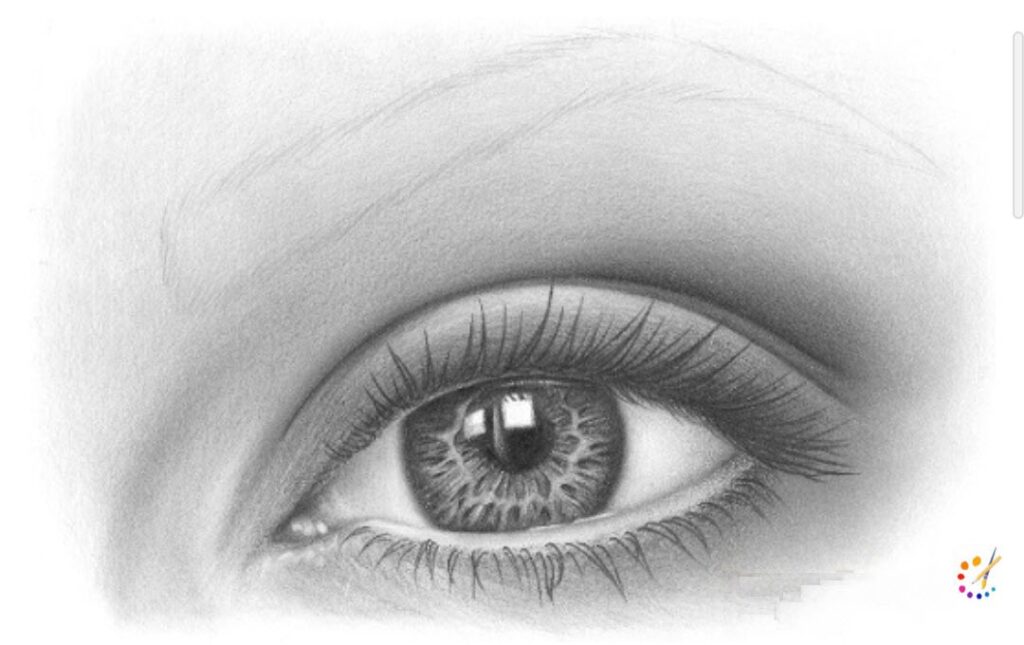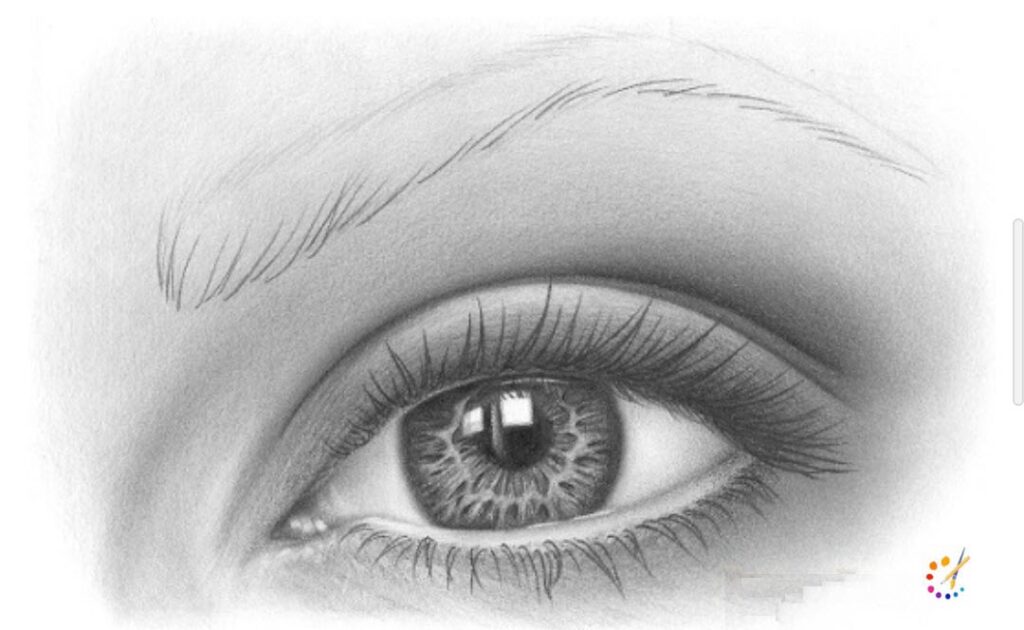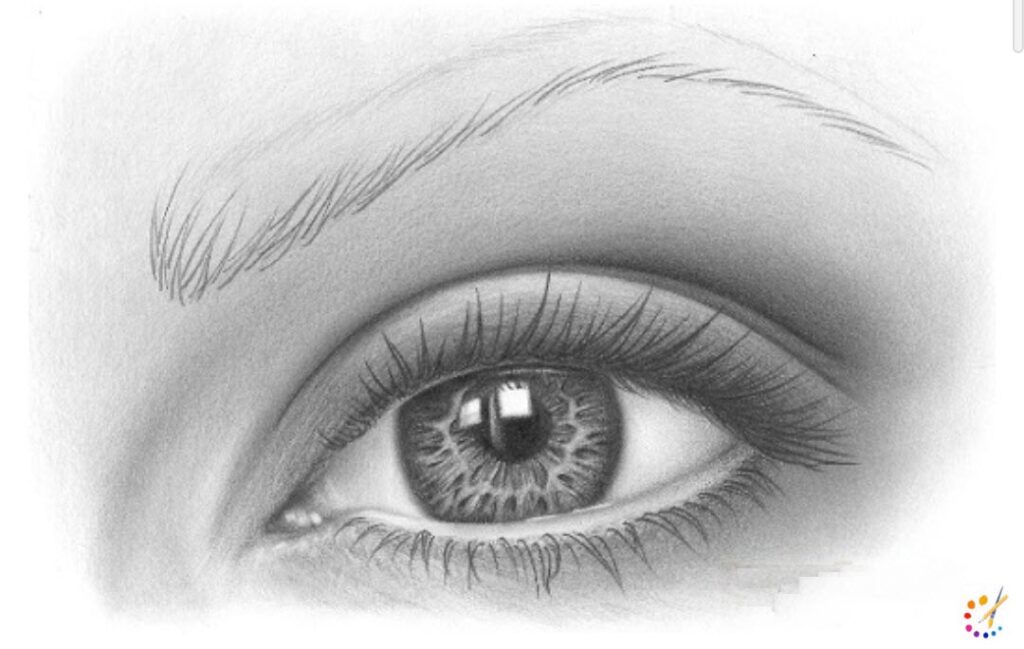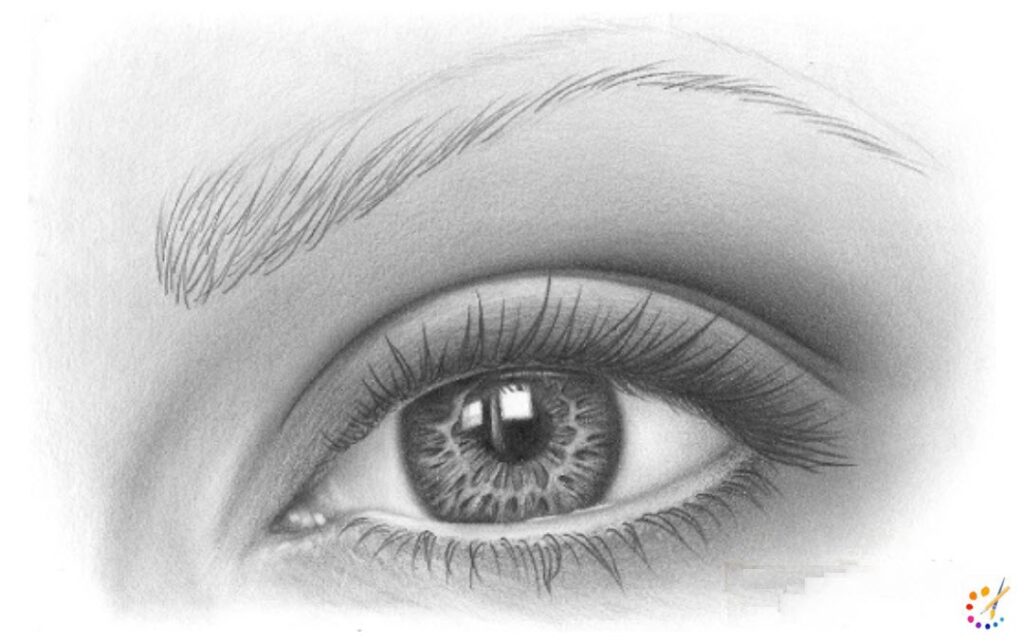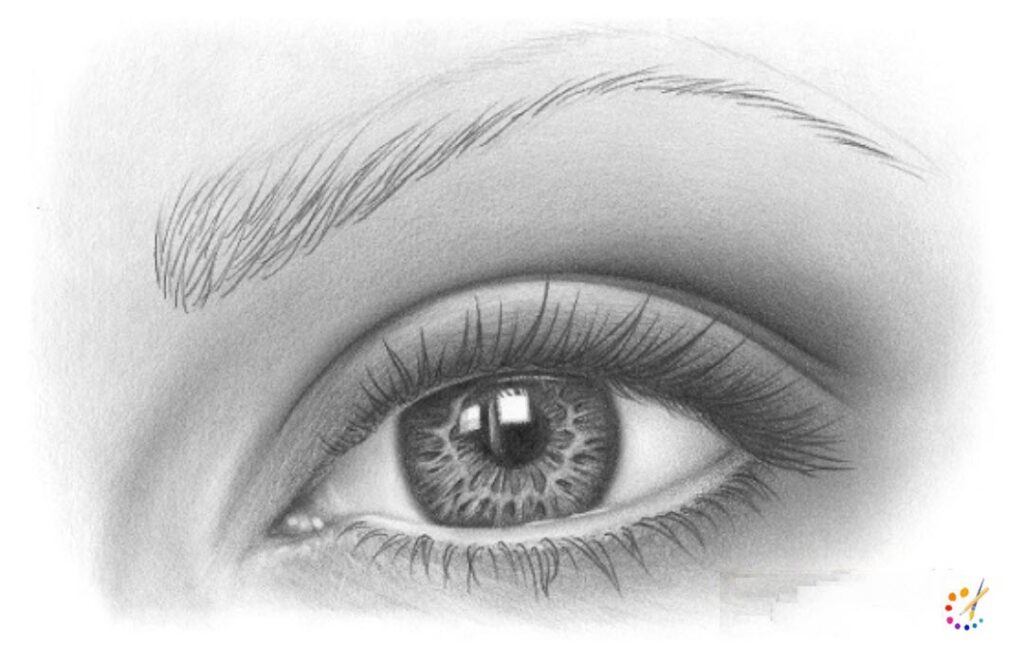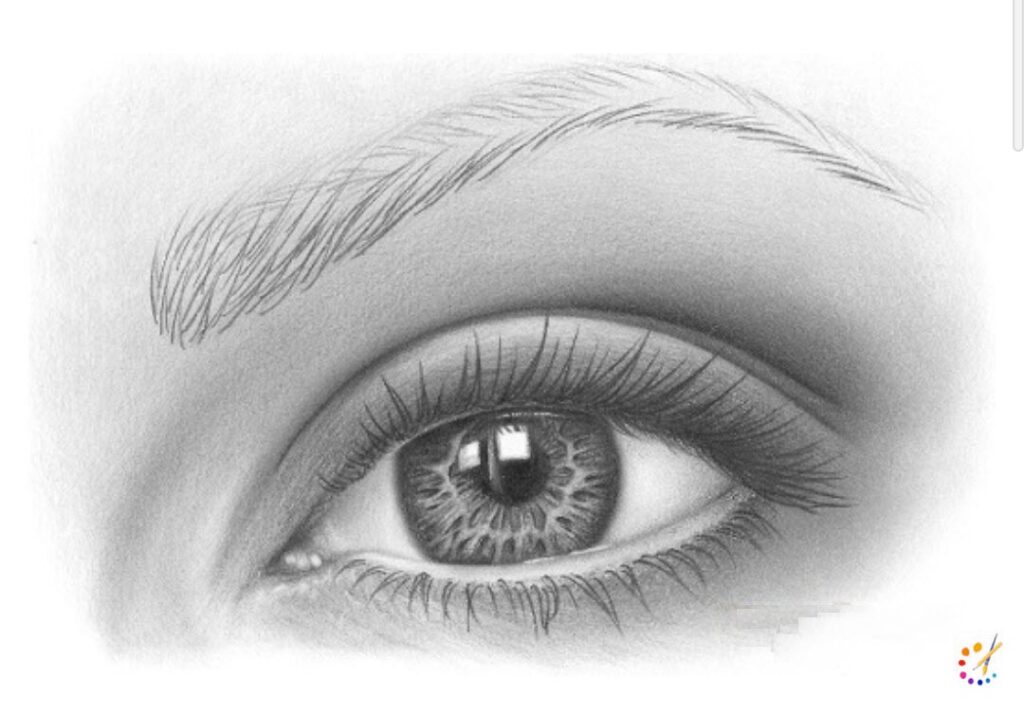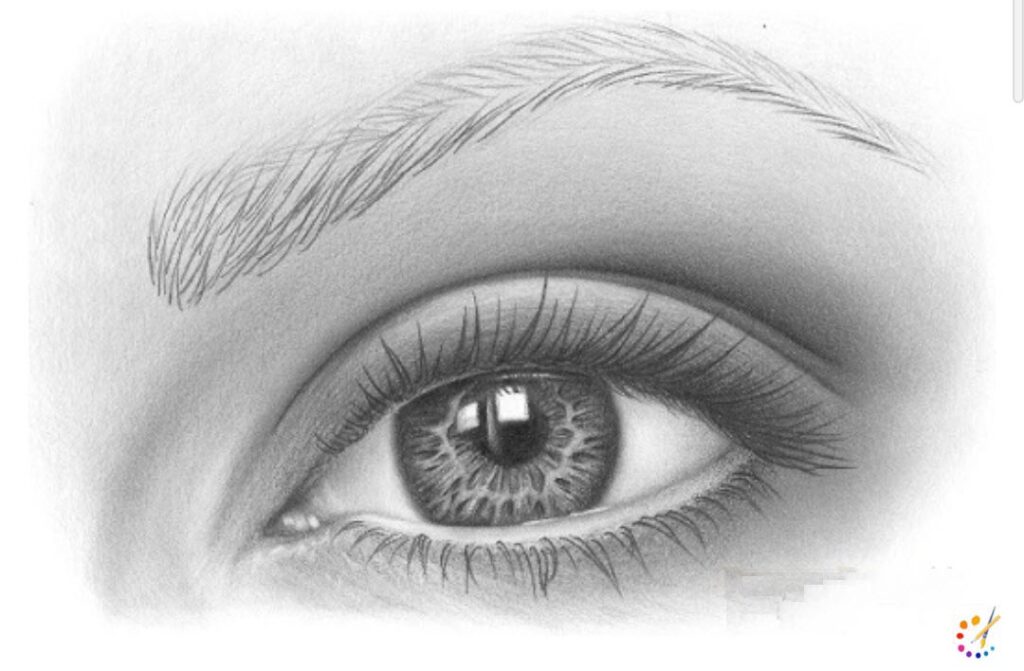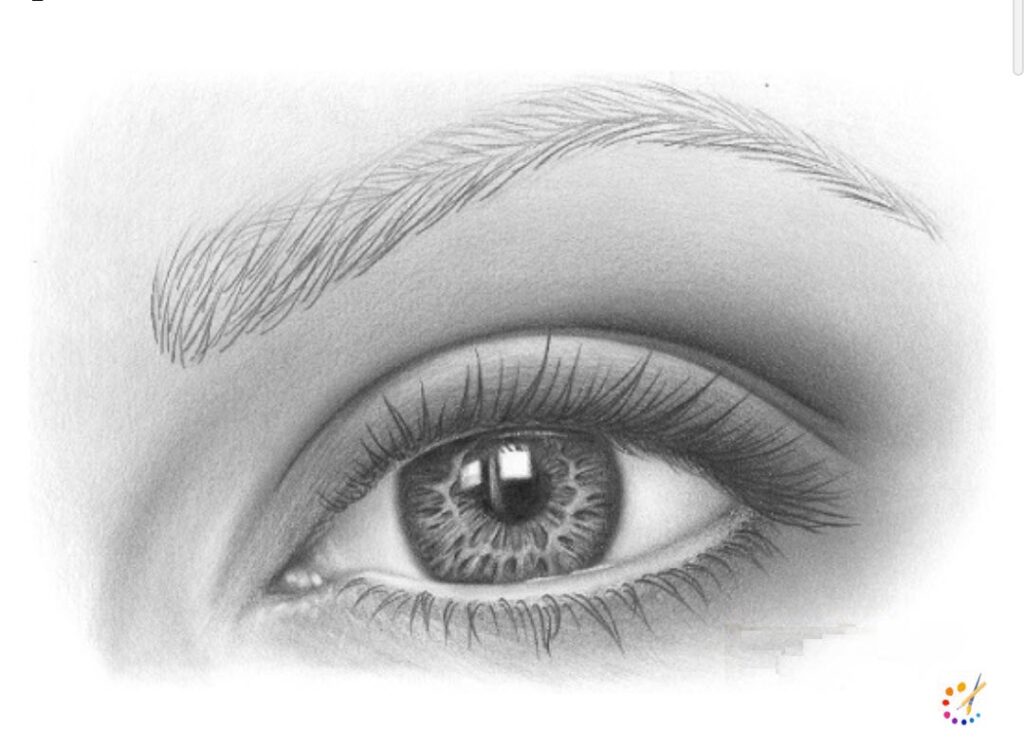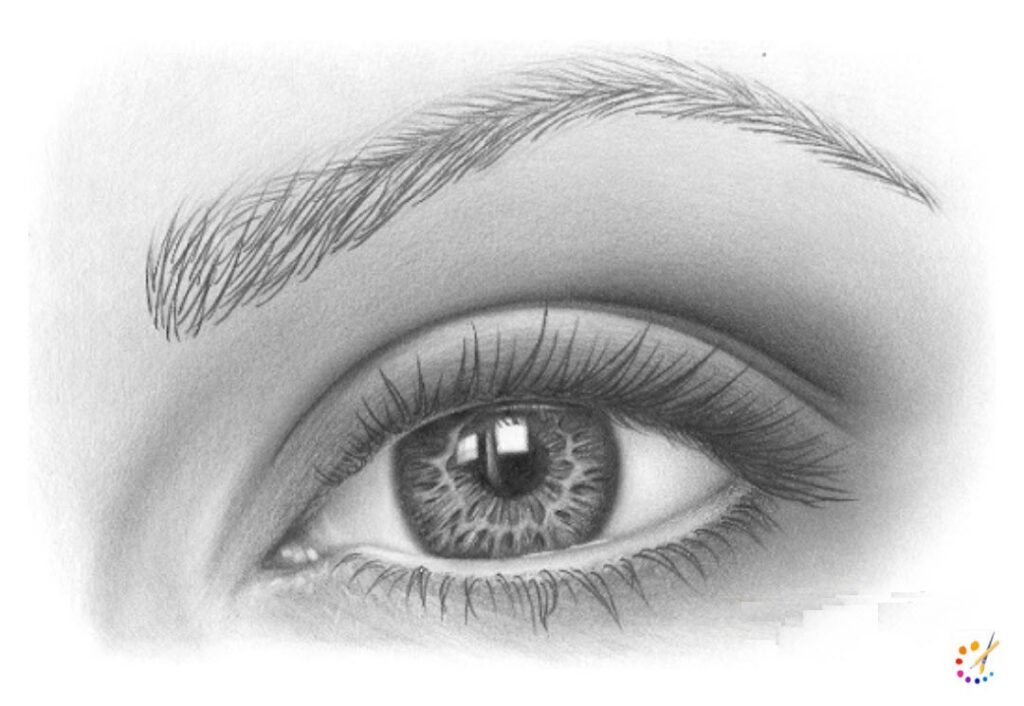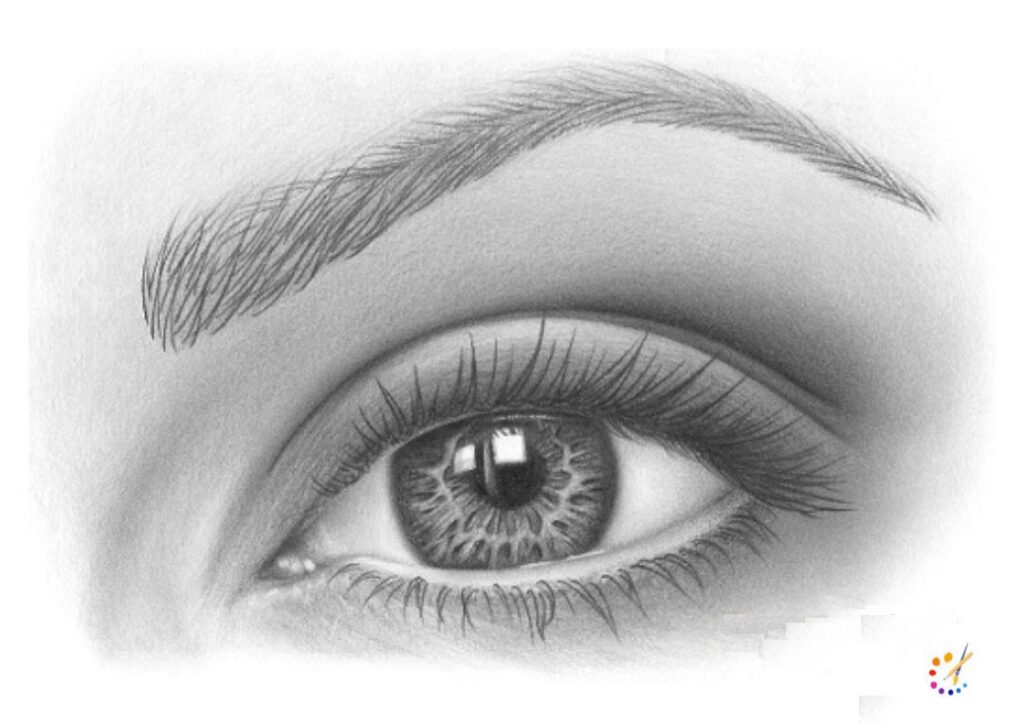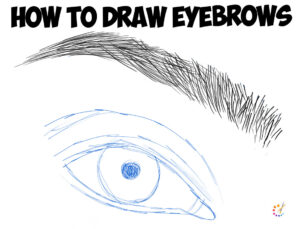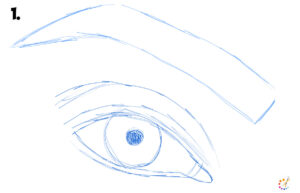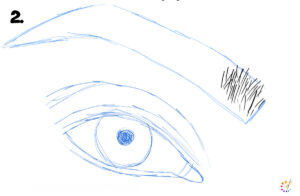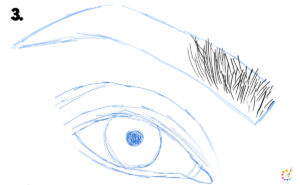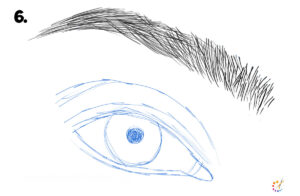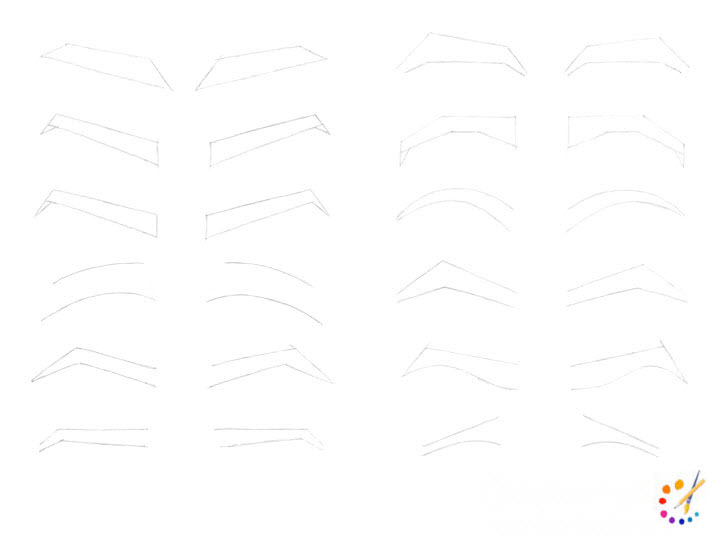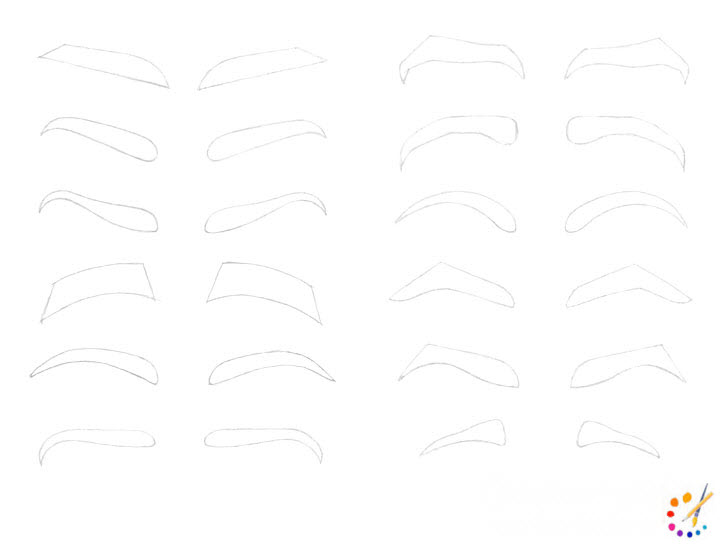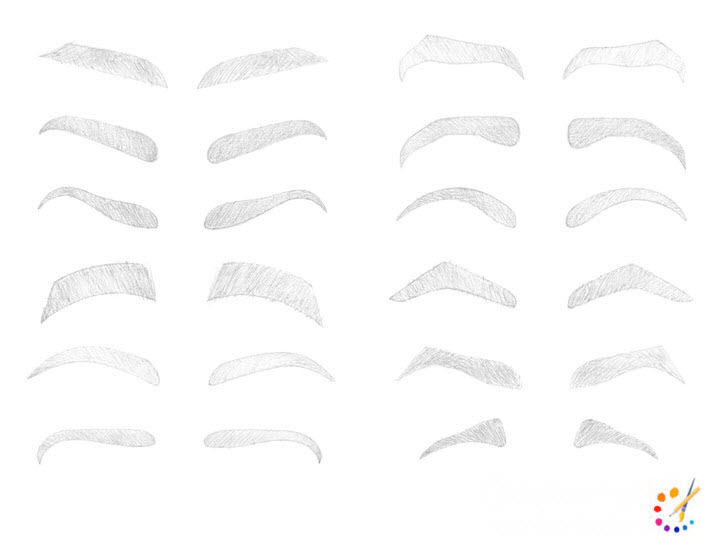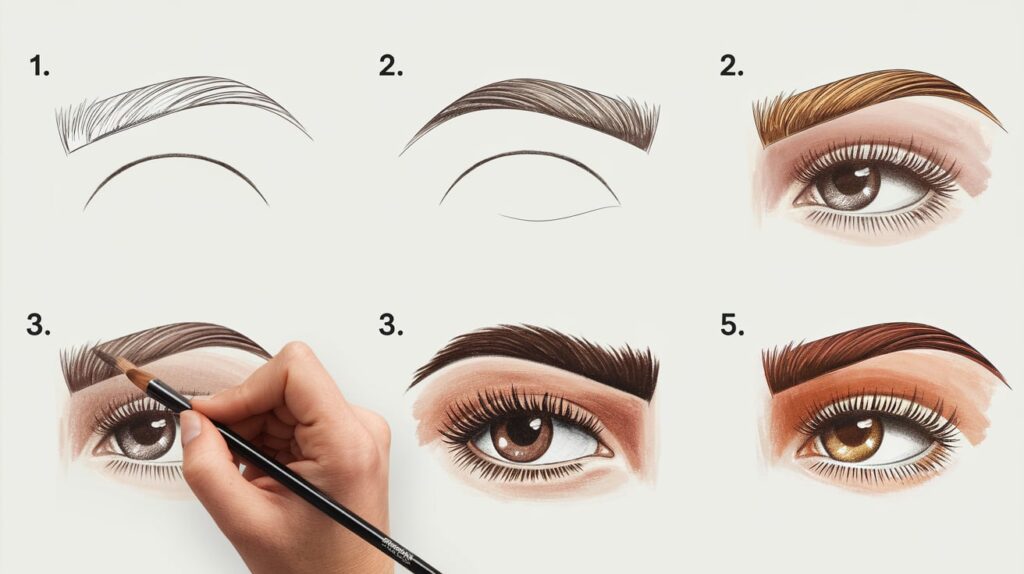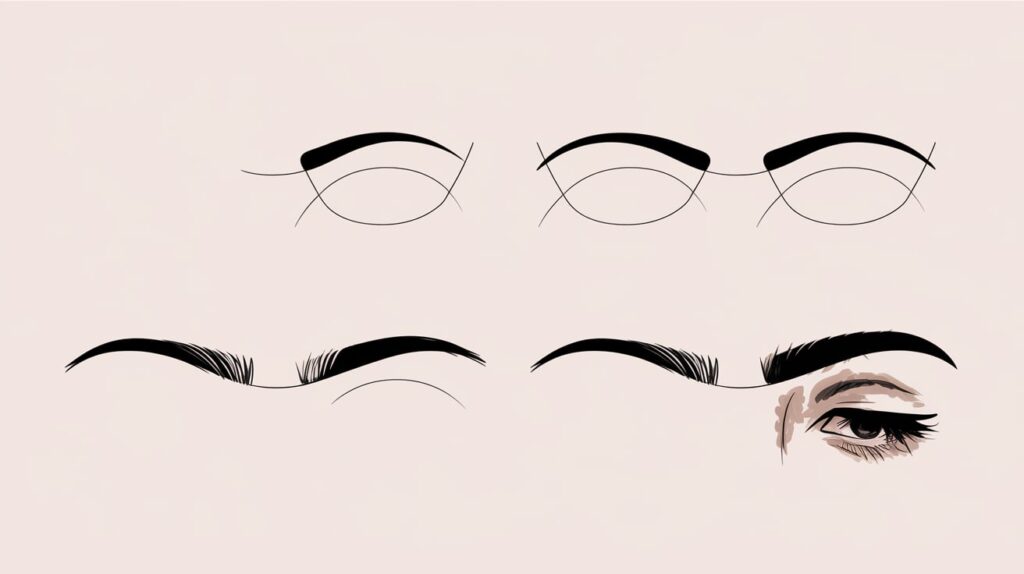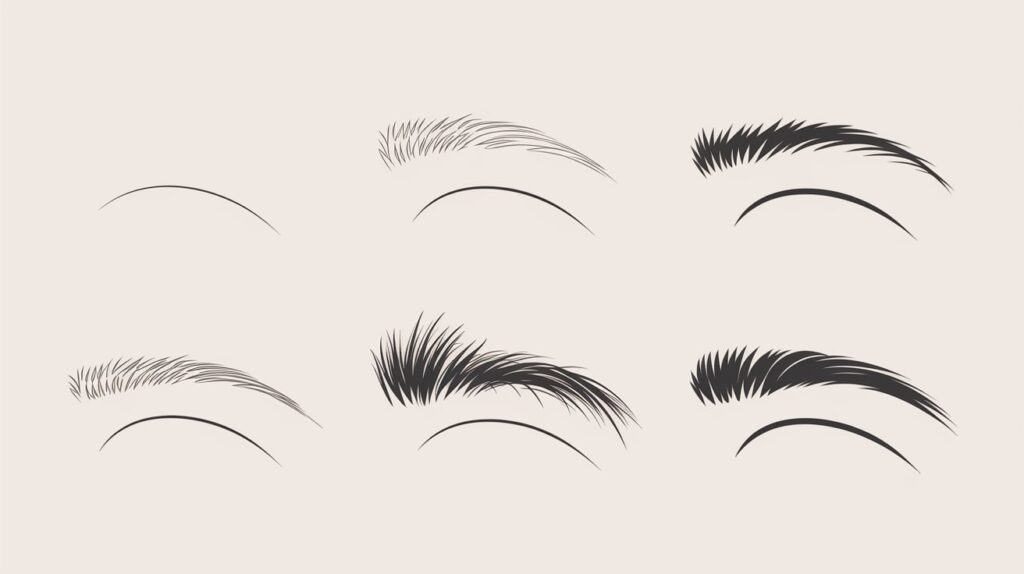Hey everyone! in this article we will get to learn how to draw eyebrows for kids and beginners. I tried to make this tutorial easy to understand and follow. Drawing eyebrows need a lot of patience and drawing skill as every hair is very much clear and visible.
As we know eyebrows grow along the brow bone which is located just above the eye socket of the eyes. Eyebrows vary from person to person in length and density but in general slightly longer than the length of the eyes themselves. There is no perfect shape for eyebrows except it grows along the brow bone.
How to Draw Eyebrows Step by Step:
Step 1: In the first step, draw the outline for the eyebrows. Do not draw it in a straight line, try to form small strokes so that it will look hairy n natural.
Step 2: From the inner outline draw an easy stroke of first row of hair going left to right. At the starting point growing direction should be upward and moving towards the end, it must be downward.
Step 3: Now draw few more rows of hairs keeping in mind that starting hairs are longer than endpoint.
Step 4: Now fill your starting point of eyebrows with different hair directions and curves. Few hairs are joining at the end.
Step 5: The overlap hairs which are drawn in the last step, darken them in this step to look them more attractive.
Step 6: Now start drawing the upper layer of hairs. The motive must be to draw thin and light in the starting. Ultimately it must give a smooth transition from upward point to downward point.
Step 7: In the upper layer also add a few more rows of hairs. Merge your hair contacting in the same direction towards the end.
Step 8: Now, fill the middle portion of eyebrows in the way they look natural to you, or follow the image below for reference.
Step 9: Observe your drawing, if it seems inconsistent at any point draw hair over that place or darken the overlapping hairs. Keep in mind the directions you have followed in prior steps.
Step 10: Darken your eyebrows and draw shadows inside and outside the eyebrows avoid hard edges. That’s it! here your eyebrows are ready.
Draw Eyebrows For Beginners
Step 1: Lightly draw guidelines for eyebrow.
Step 2: Draw short and standing hair from the starting point of the eyebrow.
Step 3: Now start drawing hair a little bit longer and tilted toward the left.
Step 4: In this step start drawing more longer hairs and almost laying towards the left.
Step 5: At the end of the eyebrow hairs become longer, heavier, and completely laying down.
Step 6: At the end erase the outline carefully and your eyebrows are ready.
Few more different easy eyebrows drawings:
Every person has different eyebrows but you can apply similar steps to draw them. Here are a few common eyebrows to practice.
Step 1: Firstly make the construction for your eyebrows.
Step 2: Make a very light line drawing.
Step 3: Start shading your drawing with easy strokes.
Step 4: Finally finish it by darkening the eyebrows hairs in different directions and densities.
You can draw realistic eyebrows with this tutorial, it’s very easy. Maybe the first time, it doesn’t come right at the first time still, you can start and complete it quickly. For the more similar tutorials you can follow how to draw braid, how to draw tree, how to draw dog.
Here’s a step-by-step guide to drawing eyebrows with structure and detail:
Step 1: Outline the Brow Shape
- Lightly draw the basic shape of the eyebrow to define the arch, thickness, and length. Use a soft curve for a natural look or a more angular line for sharp brows.
- Make sure the brow tapers thinner at the ends and is fuller at the inner corner.
Step 2: Mark Key Areas
- Divide the brow into three sections: the inner edge (closest to the nose), the arch (middle point), and the tail (outer edge). This helps with proportional placement.
- You can use reference points from the nose and eye for alignment.
Step 3: Add Hair Direction Guidelines
- Sketch light lines indicating the natural hair flow. Inner brow hairs usually grow upward, while the arch and tail curve diagonally or downward.
- Ensure the hair flow changes smoothly along the brow to keep it natural.
Step 4: Draw Individual Hair Strands
- Use short, quick strokes to draw individual hairs. Start at the inner brow and gradually adjust the direction based on the flow guideline.
- Avoid making all hairs uniform—vary their length and thickness for a realistic touch.
Step 5: Add Depth and Texture
- Layer more strokes on top of the first set to create depth. Focus on areas like the arch and inner corner for fuller brows.
- Leave some light areas between the strands to mimic natural hair gaps.
Step 6: Refine the Shape
- Erase stray or unnecessary strokes to clean up the edges. Define the shape of the tail by thinning out the lines gently.
- Ensure the brows look symmetrical but not identical to maintain realism.
Step 7: Shade and Blend
- Lightly shade the brow to create volume. Use a blending tool or soft pencil strokes to smooth out the darker areas.
- Focus more shading around the arch and the inner brow for a dimensional look.
Step 8: Finalize the Details
- Add fine lines and stray hairs along the edges to enhance the realism.
- Recheck symmetry and adjust any areas that seem uneven.
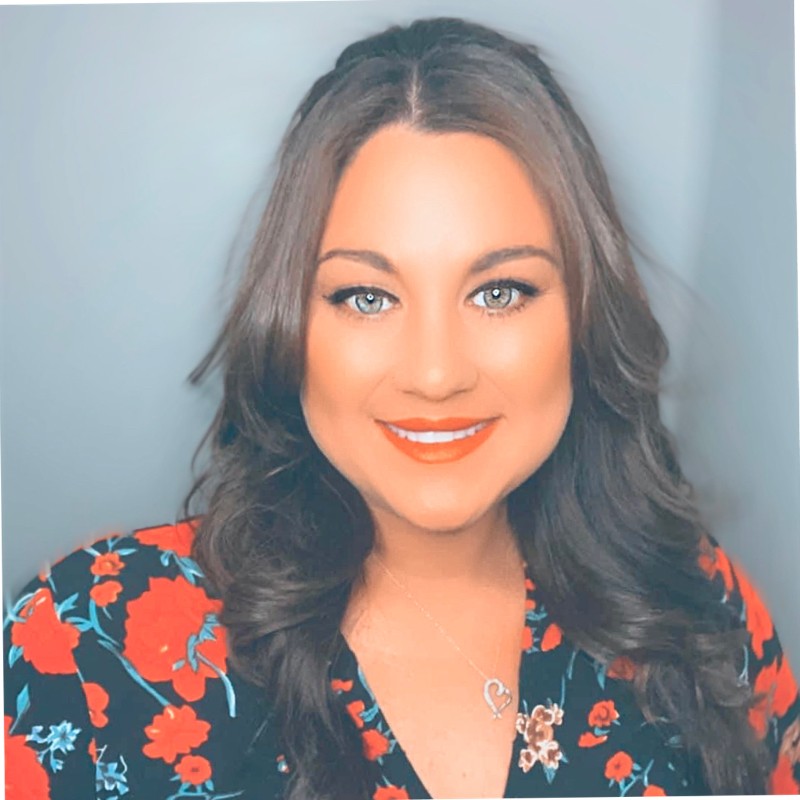
Skilled teacher, knowledgeable in and in adapting state content standards to individual needs in
Elementary-6th grade classrooms. Utilizes instructional materials, technology, and teaching methods to
engage students in effective learning opportunities in individual, small group, and whole-group settings to
maximize instructional time. Differentiates instruction for ELLs while exposing them to rigorous content,
with a focus on literacy skills in all subject areas. Establishes and maintains appropriate standards of
behavior in an inclusive and respectful environment for students from all socio-economic and cultural
backgrounds. Develops lesson plans using Backwards Planning Method to align content standards and
assessments with effective learning activities. Communicates and collaborates effectively with staff and
parents, and creates a safe and positive learning environment for students. Has taught in both in-person
and virtual environments. Professional Communicator with 20+ years of experience.


